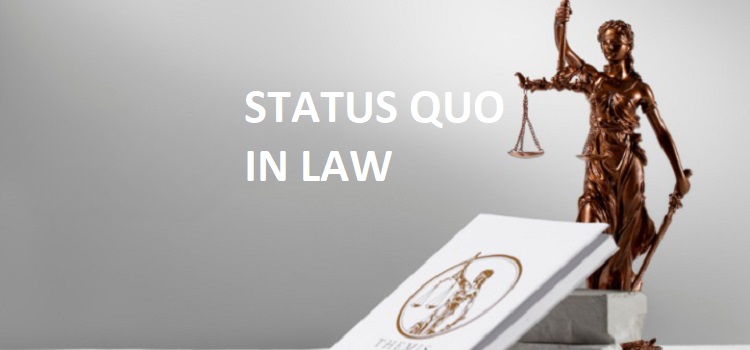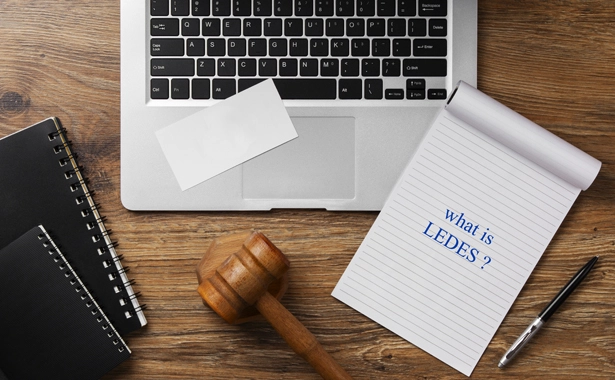Analyzing Status Quo Meaning: Its Legal Interpretation and Practical Use
Navigating the Characteristics of Status Quo in Legal Solutions: An All Natural Method
In the world of lawful systems, the idea of status holds a considerable function in shaping the structure whereupon laws and guidelines are constructed. Understanding and successfully browsing the dynamics of the condition quo calls for an alternative method that goes beyond mere surface-level analysis. By diving into the complex interplay of different aspects influencing the legal condition quo, one can reveal nuanced insights that pave the means for educated decision-making and calculated preparation. As we discover the intricacies surrounding this essential aspect of legal structures, a deeper understanding of the difficulties and opportunities that feature it arises, prompting us to reevaluate traditional techniques and embrace a more detailed perspective.
The Value of Condition Quo Analysis
In legal proceedings, performing a thorough standing quo analysis is paramount to comprehending the present state of affairs and providing a foundation for informed decision-making. This evaluation involves a detailed evaluation of existing problems, agreements, and scenarios that shape the context within which legal activities are being taken into consideration. By assessing the status, attorneys can identify essential stakeholders, commitments and rights, possible threats, and chances for resolution.
Additionally, delving into the status quo facilitates the identification of any gaps or inconsistencies that might exist, shedding light on areas that require focus or clarification. This procedure aids in setting reasonable assumptions and establishing methods that align with the dominating scenarios. Understanding the status is vital for establishing a roadmap that guides lawful proceedings in the direction of reliable end results while lessening unplanned effects.
Inevitably, a thorough standing quo analysis functions as a keystone for sound lawful recommendations and calculated planning. It enables legal specialists to navigate complexities, prepare for difficulties, and customize their strategy to accomplish favorable results for their clients.
Elements Influencing Lawful Status
Taking into consideration the detailed internet of regulations, laws, and societal norms, what are the key factors that form and influence the legal condition quo in contemporary legal systems? Several crucial variables play critical duties in establishing the legal status within a legal system. Firstly, historical precedent and legal practices significantly affect the present state of the legislation. Precedents established by previous court decisions and well-known legal concepts form the interpretation and application of legislations today. Second of all, social worths and cultural norms influence legal developments as regulations typically show the ideas and values of the culture they control. In addition, political dynamics and the balance of power within a legal system can heavily influence the legal status quo. Political stars, such as legislators, policymakers, and single-interest group, play a crucial role in shaping policies and regulations. Financial considerations and technological innovations also impact the legal standing quo by requiring new laws or alterations to existing ones to attend to arising issues in these domain names. It is the interaction of these elements that collectively form and influence the legal status in modern lawful systems.
Approaches for Condition Quo Management
Efficient management of the legal condition quo requires a critical approach that acknowledges the vibrant nature of lawful systems and the varied variables influencing them. One key method for standing quo monitoring is normal monitoring and analysis of lawful growths.

Furthermore, efficient interaction and partnership amongst stakeholders are vital approaches for managing the status in lawful systems. By fostering open discussion and participation between policymakers, lawful experts, and various other relevant celebrations, possible conflicts can be dealt with proactively, and remedies can be established collaboratively to maintain a stable legal atmosphere.
Obstacles in Status Quo Adaptation

Furthermore, the absence of clear standards for navigating standing quo adjustments can produce unpredictability and ambiguity. Lawyers frequently locate themselves in uncharted region when attempting to test existing standards or integrate new legal structures. This can cause hesitancy and hesitation to differ familiar methods, additionally impeding the adaptation process.
Executing Holistic Techniques
Incorporating a detailed perspective into lawful techniques is necessary for dealing with the complex challenges of contemporary lawful systems. Implementing alternative strategies includes a change in the direction of seeing lawful concerns as interconnected parts of a larger system instead of separated events. This needs an aggressive stance that thinks about not just the immediate legal effects yet also the wider social, economic, and honest influences of legal decisions.
One key element of carrying out all natural approaches is promoting interdisciplinary partnership within legal teams. By combining specialists with varied backgrounds such as legislation, psychology, economics, and sociology, an extra nuanced understanding of complex legal concerns can be achieved. This joint strategy makes it possible for lawful professionals to create a lot more reliable techniques that represent a large range of elements influencing the results of lawful instances.
In addition, accepting modern technology and data-driven understandings is crucial in implementing holistic approaches in lawful systems. Leveraging devices like man-made knowledge for lawful research study, predictive analytics for situation outcomes, and information visualization for offering intricate information can boost decision-making procedures and improve total lawful end results. By incorporating these technical improvements into legal technique, a more holistic and effective technique to resolving legal challenges can be accomplished.
Verdict
In conclusion, navigating the dynamics of condition quo in legal systems requires a detailed understanding of the relevance of status quo evaluation, the various elements influencing lawful status, efficient approaches for status monitoring, and the obstacles in status adjustment. Executing all natural approaches is essential for effectively adjusting and taking care of to the status in lawful systems. It is essential for legal professionals to constantly evaluate and adjust to the changing characteristics of the status to make certain effective and efficient lawful end results.
Considering the elaborate web of legislations, laws, and societal standards, what are check my blog the key elements that form and affect the lawful status quo in contemporary lawful systems? Numerous essential aspects play crucial functions in establishing the lawful status quo within a legal system. It is the interplay of these aspects that jointly form and influence the legal condition quo in contemporary lawful systems.
Reliable management of the legal status quo needs a calculated strategy that recognizes the vibrant nature of lawful systems and the varied factors influencing them.In conclusion, navigating the dynamics of condition quo in lawful systems calls for a comprehensive understanding of the significance of status quo analysis, the various elements affecting legal standing quo, reliable approaches for standing quo monitoring, and the obstacles in standing quo adjustment.